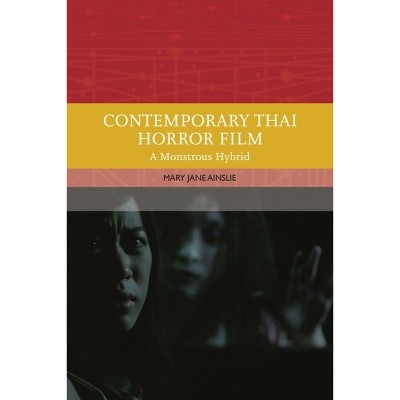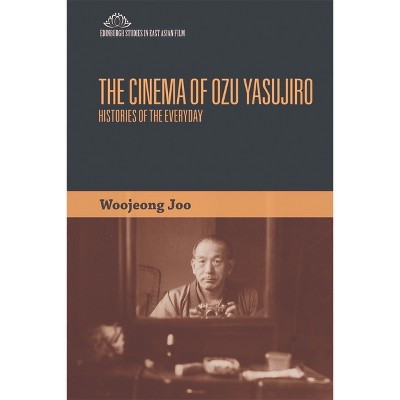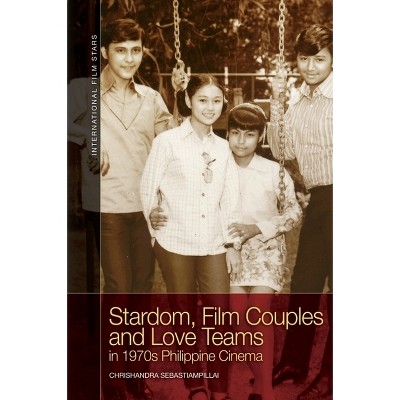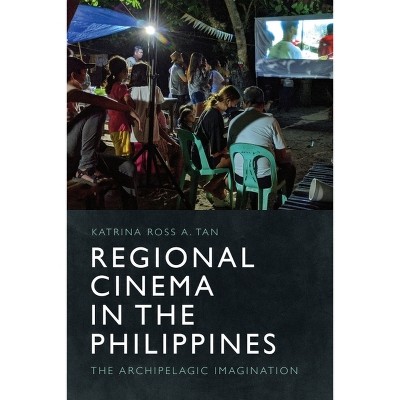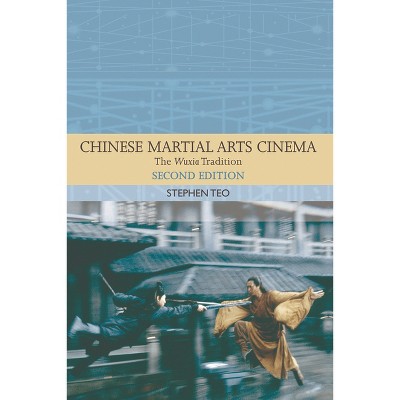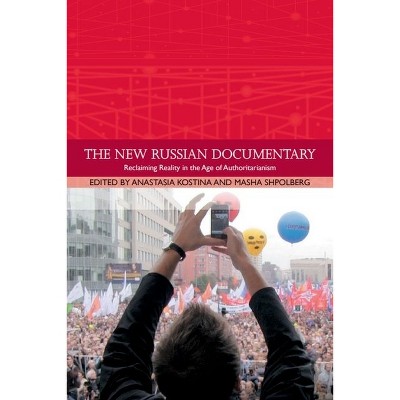Sponsored

Korean Horror Cinema - by Alison Peirse & Daniel Martin (Paperback)
In Stock
Sponsored
About this item
Highlights
- Peirse and Martin's edited volume defines the national genre of Korean Horror from gothic horror to monster movie.
- About the Author: Alison Peirse is Programme Leader in Film and Television Studies at the University of Northumbria.
- 256 Pages
- Performing Arts, Film
Description
About the Book
Peirse and Martin's edited volume defines the national genre of Korean Horror from gothic horror to monster movie.Book Synopsis
Peirse and Martin's edited volume defines the national genre of Korean Horror from gothic horror to monster movie.From the Back Cover
Korean Horror Cinema Editors: Alison Peirse and Daniel Martin 'From avenging ghost stories to the gory violence of Asian "Extreme", andfrom folkloric fox women to haunted high schools, this remarkable volume is an indispensable contribution to the expanding field of global horror film studies. Editors Peirse and Martin and their collected authors explore the history, national contexts, and global interactions of the Korean horror film. Fans, critics, and scholars alike will find this volume a useful introduction to a little-explored area of global film culture.' Harry M. Benshoff, University of North Texas As the first detailed English-language book on the subject, Korean Horror Cinema introduces the cultural specificity of the genre to an international audience, from the iconic monsters of gothic horror, such as the wonhon (vengeful female ghost) and the gumiho (shapeshifting fox), to the avenging killers of Oldboy and Death Bell. Beginning in the 1960s with The Housemaid, it traces a path through the history of Korean horror, offering new interpretations of classic films, demarcating the shifting patterns of production and consumption across the decades, and introducing readers to films rarely seen and discussed outside of Korea. It explores the importance of folklore and myth on horror film narratives, discusses the impact of political and social change upon the genre, and accounts for the transnational triumph of some of Korea's contemporary horror films. While covering some of the most successful recent films such as Thirst, A Tale of Two Sisters, and Phone, the collection also explores the obscure, the arcane and the little-known outside Korea, including detailed analyses of The Devil's Stairway, Woman's Wail and The Fox With Nine Tails. Its exploration and definition of the canon makes it an engaging and essential read for students and scholars in horror film studies and Korean Studies alike. Alison Peirse is Programme Leader in Film and Television Studies at the University of Northumbria. Daniel Martin is Assasstant Professor of Film Studies at KAIST (Korea Advanced Institute of Science and Technology). Cover image: Thirst, 2009 (c) Focus Features / The Kobal Collection. Cover design: Barrie TullettReview Quotes
'An important scholarly contribution to Korean cinema studies in the English-speaking world. It lays the groundwork for future research of Korean horror cinema as well as horror genre studies in general.'--Irhe Sohn (University of Michigan) "H-Net, Humanities and Social Sciences"
From avenging ghost stories to the gory violence of Asian "Extreme," and from folkloric fox women to haunted high schools, this remarkable volume is an indispensable contribution to the expanding field of global horror film studies. Editors Peirse and Martin and their collected authors explore the history, national contexts, and global interactions of the Korean horror film. Fans, critics, and scholars alike will find this volume a useful introduction to a little-explored area of global film culture. Professor Harry M. Benshoff, University of North Texas--Professor Harry M. Benshoff, University of North Texas
The book is written by contributors who understand both Korean and western cultures, which adds credibility to its analysis of Korean horror films in both national and international cinematic contexts. Throughout the book, the reader is introduced to a substantial history of Korean horror cinema and even readers with no knowledge of Korean films and culture will find the book useful. However, scholars and students in the field of Korean Film Studies will find the book essential. It is clearly arranged, accessible, well written and, most of all, its descriptions of Korean horror films are as fascinating as the chilling horror films that captivate us.'--Eunju Baehrisch "East Asian Journal of Popular Culture"
About the Author
Alison Peirse is Programme Leader in Film and Television Studies at the University of Northumbria. She researches international horror film and television and is the author of After Dracula: The 1930s Horror Film (I.B. Tauris). Her work has been published in Gothic Studies, Asian Cinema, Visual Culture in Britain, Studies in European Cinema and Journal of Adaptation in Film and Performance.
Daniel Martin is Associate Professor of Film Studies in the School of Humanities and Social Sciences at the Korea Advanced Institute of Science and Technology (KAIST). His recent research concerns the international circulation of films from East Asia. He is the author of Extreme Asia: The Rise of Cult Cinema from the Far East (Edinburgh University Press, 2015), co-editor of Korean Horror Cinema (Edinburgh University Press, 2013).
Shipping details
Return details
Trending Non-Fiction






